Each panel on an ALMA antenna’s 12-meter dish must be carefully hand-adjusted to its neighbors to create a surface that is a perfect parabola, nearly a mirror finish. The wavelengths of radio light that ALMA collects are so tiny that even a hair’s difference in the parabola shape will scatter away the signals.

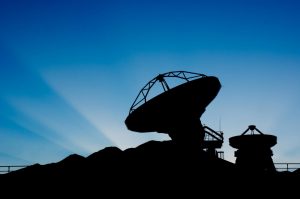
Sunbeams Grace ALMA
Beams of sunshine are captured behind the distant mountains that ring the ALMA site in northern Chile. A 7-meter Japanese antenna and North America’s final 12-meter antenna await a day of testing in the Operations Support Facility.
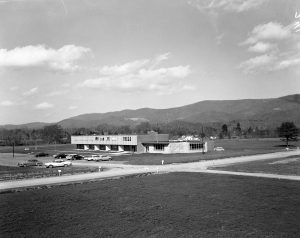
Dormitory and Cafeteria
Completed in 1959, this building housed a dormitory, cafeteria, and lounge for staff and visitors to Green Bank. Radio telescopes are often located in remote areas, and a large portion of their construction costs goes into creating astronomical villages to support their staff.
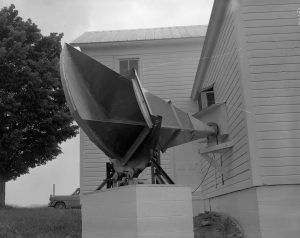
Sugar Scoop
In the early 1960s, this parabolic horn antenna, affectionately known as the “sugar scoop,” was used by staff at Green Bank. A suite of other antennas surrounded this farmhouse, known as the Mary Beard house. Together, these antennas helped astronomers and engineers know the atmospheric conditions facing them as they built the giant telescopes that would soon dominate Green Bank.
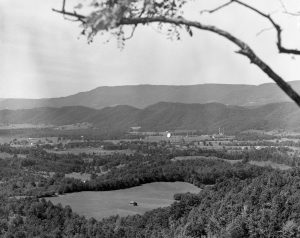
View from the Hills
The Green Bank site, circa 1962, viewed from the northeast. The bright white dish of the first telescope erected here, the 85-foot Howard E. Tatel, is in the middle, and behind it, to the left, sits the upward-looking mesh dish of the 300-foot. To the right of the Tatel, construction cranes flank the growing concrete base of the 140-foot.
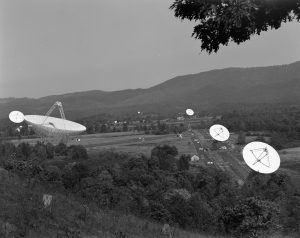
Valley Full of Telescopes
The Green Bank site, circa 1971, viewed from the southwest. The largest dish is the 300-foot with its new surface panels. Behind it to the left is the 140-foot (43-meter), still the largest polar-aligned telescope in the world. And the line of three identical dishes is the Green Bank Interferometer (GBI), the 85-footers working together as our first array. Their control building is off the connecting road to the left, and the tower with the dish atop collects data from a fourth, remote telescope of the array.





